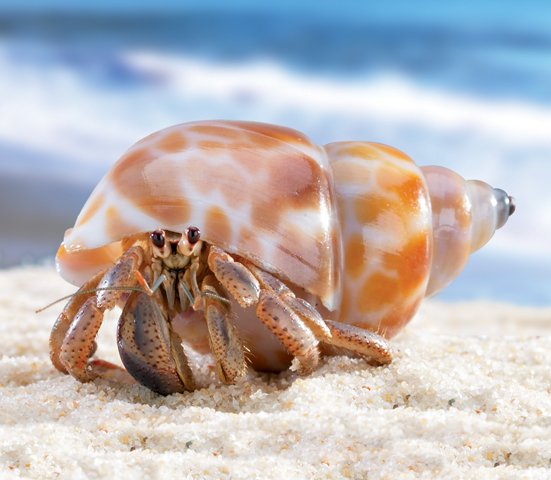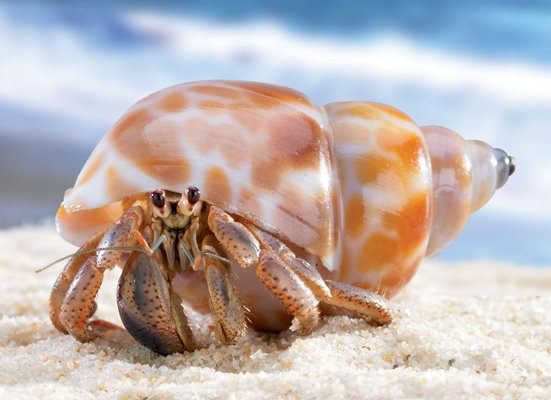
Let’s dive into the world of hermit crabs and explore where they call home. From the bustling tide pools to the depths of the ocean, hermit crabs have adapted to survive in various settings. Their unique lifestyle and choice of housing make them fascinating creatures to study. Here’s what you need to know about where hermit crabs are found and what makes their habitats so special.
Marine Habitats: The Ocean Depths
One of the primary places you’ll find hermit crabs is in the ocean. These marine habitats can range from shallow coastal waters to deeper regions. Coastal areas are typically home to a variety of hermit crab species, thriving in both rocky and sandy environments. The Pacific Ocean, Atlantic Ocean, and the Caribbean Sea are teeming with these tiny crustaceans.
You might be surprised to learn that hermit crabs aren’t just confined to sunny beaches. They can also inhabit the murky waters of estuaries—where fresh and saltwater mix. Here, they find an abundance of food sources, like algae, seaweed, and tiny marine organisms. The sounds of waves crashing and the smell of saltwater are just part of the charm of their ocean homes.
Rocky Shores and Tide Pools
Tide pools are another fascinating habitat for hermit crabs. These small pools, formed on the rocky shore during low tide, trap water and create a miniature ecosystem. Here, hermit crabs can forage for food among the seaweed and hunt for new shells, which they often switch out as they grow.
Imagine walking along a rocky beach, lifting rocks, and spotting these busy little guys scuttling around. Each pool is like a tiny treasure chest, full of life, waiting to be explored. The diversity of species in these areas provides hermit crabs with a range of choices, making tide pools an ideal home.
Freshwater Environments: Rivers and Streams
While most people associate hermit crabs with the ocean, some species can also be found in freshwater habitats like rivers and streams. For instance, the Freshwater Hermit Crab, although less common, adapts to living in slow-moving waters. In these environments, they often take refuge under rocks or submerged logs, where they stay moist and safe from predators.
It’s interesting to think about how these freshwater hermit crabs might differ from their saltwater cousins. They’ve developed unique adaptations to deal with changes in salinity and water quality. If you’re exploring a riverbank, keep an eye out for them hiding in the shadows, as they can be quite elusive.
Coastal Forests and Mangroves
Hermit crabs aren’t just limited to the water; they also inhabit coastal forests and mangroves. These rich ecosystems provide a wealth of food options and shelter. In these areas, hermit crabs can munch on fallen fruits, leaves, and detritus. The thick mangrove roots offer a safe haven from larger predators.
The coastal forest is a world of its own, filled with lush vegetation and diverse wildlife. As the tide comes in and out, hermit crabs transition between land and water, adapting to the rhythms of their environment. It’s like watching a tiny drama unfold as they scurry back to safety when the waves return.
Symbiotic Relationships in Mangroves
In mangrove forests, hermit crabs often share their space with other creatures. They can engage in fascinating symbiotic relationships, benefiting from the environment created by the trees and other wildlife. For instance, some hermit crabs may help clean the environment by scavenging for decaying plant material, thus playing a crucial role in the ecosystem.
These interactions highlight the delicate balance within these habitats. Each organism, including the hermit crab, plays a part in maintaining the health of the ecosystem. It’s a lovely reminder of how interconnected our natural world is.
Land Habitats: Terrestrial Crabs
You might be surprised to find out that some hermit crab species live on land, especially in tropical regions. Terrestrial hermit crabs can be spotted in sandy beaches and forest floors, where they still require moisture to survive. They often burrow into the sand or hide under rocks during the hottest parts of the day, seeking shelter from the elements.
On land, hermit crabs face unique challenges. They need to find food while managing water loss and avoiding predators. Their shells become their shields, offering protection as they navigate their terrestrial world. It’s interesting to learn how these little creatures have adapted their lifestyles to thrive both in and out of the water.
Living in Groups: Social Behavior
One fascinating aspect of terrestrial hermit crabs is their social behavior. Unlike some solitary animals, they often gather in groups, which can provide safety in numbers. When searching for shells, they can sometimes be seen exchanging shells with one another—talk about a quirky swap meet!
This social interaction can be a delightful spectacle, showcasing their unique personalities. Watching them interact gives you a glimpse into their world and highlights the communal nature of these clever crustaceans.
Threats and Conservation
As we explore the various habitats of hermit crabs, it’s essential to consider the challenges they face. Many environments, especially coastal areas, are threatened by pollution, habitat destruction, and climate change. These issues can dramatically impact the availability of shells and food sources.
Conservation efforts are crucial in protecting hermit crabs and their habitats. Simple actions, such as reducing plastic waste and supporting local ecosystems, can make a difference. The more we learn about these fascinating creatures, the better we can protect them and the environments they call home.
The Future of Hermit Crabs
Where hermit crabs are found is a window into their remarkable adaptability and resilience. From the depths of the ocean to the banks of rivers, and even the forests by the shore, these crustaceans showcase the beauty of diversity in the natural world. With ongoing efforts to protect their habitats, we can ensure that future generations get to marvel at their unique charm.
So next time you think of hermit crabs, remember their adventures beyond the beach. They’re not just cute little creatures; they’re essential players in their ecosystems, teaching us about resilience, community, and the delicate balance of nature. Keeping our oceans and environments clean is not just a responsibility—it’s a way to honor these incredible animals and their homes.

